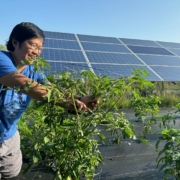Case Study: Existing Solar as Farmland Access for Emerging Farmers
By Rob Davis, Connexus Energy
“Growing Farmers, Growing Foods” is the mission at Minnesota-based Big River Farms, a program of 501(c)3 nonprofit The Food Group. They recently won the North American Agrivoltaics Award for Best Solar Farm in 2024. Big River Farms teaches farmers to farm organically, sustainably, and regeneratively while also enhancing the level of understanding of the environmental impact that can result from properly implementing these types of farming practices. Specialty crop farmers are the backbone of our food system and are major contributors to local economies. However, land access is a major barrier for many emerging farmers, including farmers of color, in both rural and urban communities.
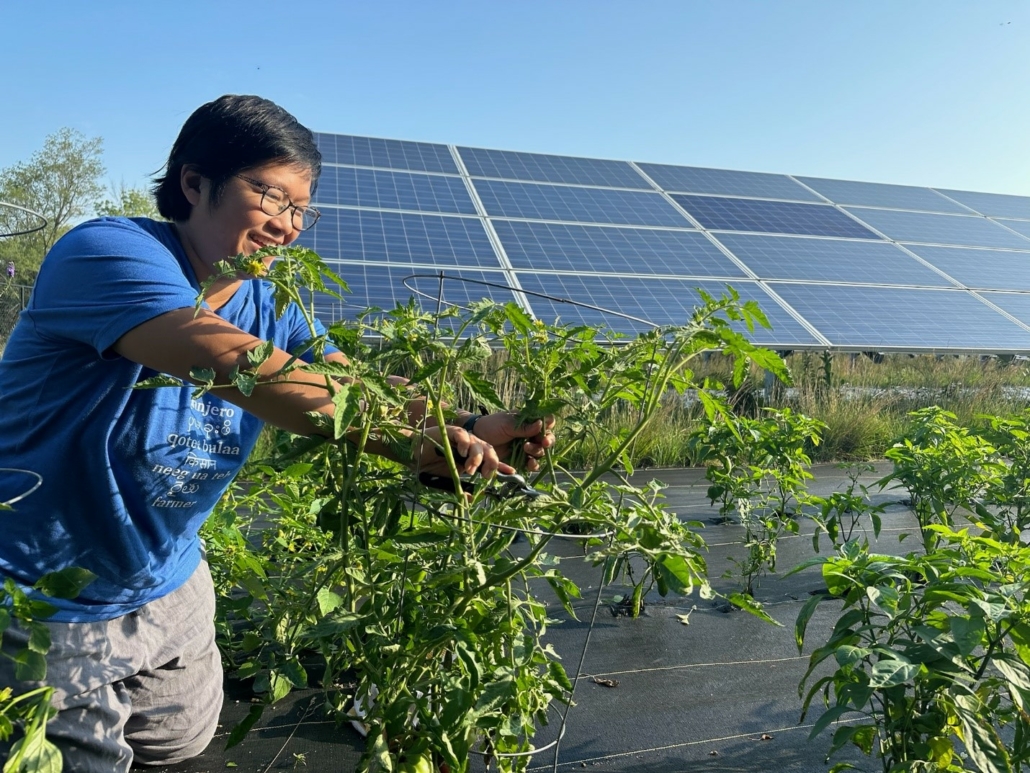
Big River Farms Program Manager KaZoua Berry. Photo: AgriSolar Clearinghouse
In 2022, the Minnesota Department of Agriculture established the nation’s first Emerging Farmers Office, with the intention of helping to remove barriers that emerging farmers face when getting started in farming. This includes new Americans and first-generation farmers who lack access to land or capital. Farmland access has been identified by the Emerging Farmers Office as the most common challenge for these farmers.
Big River Farms works with farmers who are in constant need of land to farm on. Last year in Big River Farms’ incubator program, several farmers stated that they are ready to leave the incubator farm if they can buy land or access land elsewhere so that they can scale up independently. Expanding their program to solar sites will enable Big River Farms to build leadership and capacity in the immigrant community, diversify and enhance local food production, improve access for low-income households to healthy food, and build cultural bridges between emerging farmers and the larger community.
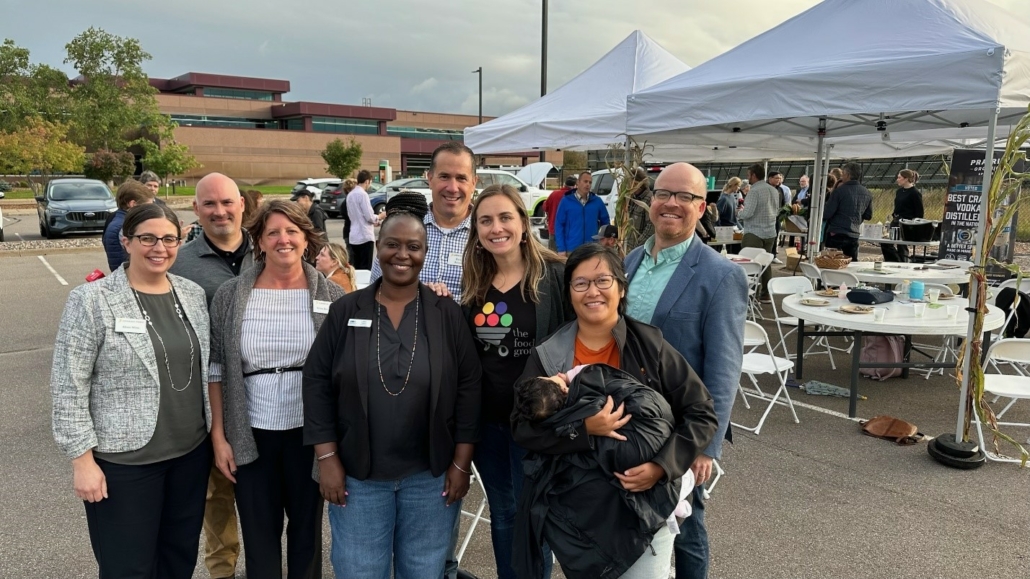
Big River Farms, the Food Group, USDA Emerging Farmers Office, and Connexus Energy. Photo: AgriSolar Clearinghouse
“With thoughtful planning and procurement, the community benefits of multi-acre solar projects can be numerous,” said Brian Ross, vice president of Renewable Energy for Great Plains Institute. “It’s important that we are stacking solutions to local food production and access into the clean energy transition.”
With this project, the visibility of the dual-use solar will create new connections to the host communities for the solar arrays and build Big River Farms’ success and enhance its mission. Association of the solar facilities with the Big River Farms’ equity goals will help resolve concerns about loss of agricultural capacity in communities hosting solar development and can contribute to accelerated deployment of solar sites on arable soils.
“A quarter of an acre between rows can become an incredibly productive plot of land that right now isn’t necessarily in use,” said Sophia Lenarz-Coy, executive director of The Food Group.
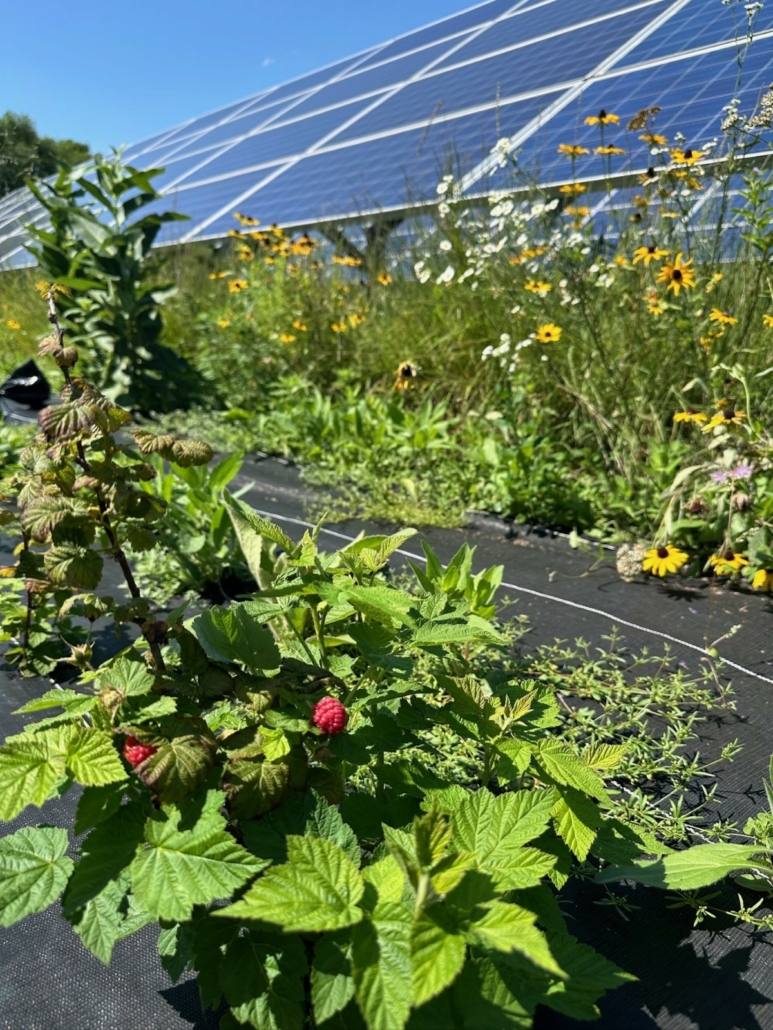
Abundant Crops Grown by Big River Farms Between Rows of Solar Panels. Photo: AgriSolar Clearinghouse
The Solar Farmland Access for Emerging Farmers project seeks to increase land access to BIPOC and immigrant farmers through the utilization of spaces around solar farms, while concurrently documenting the safe and scalable practices that solar asset owners and insurers can implement as prerequisites of site utilization. Big River Farms, Great Plains Institute, US Solar, and Connexus have worked together to implement best practices from the National Renewable Energy Lab that have created replicable guidance for others seeking to collaborate and enable solar facility access for farming activities.
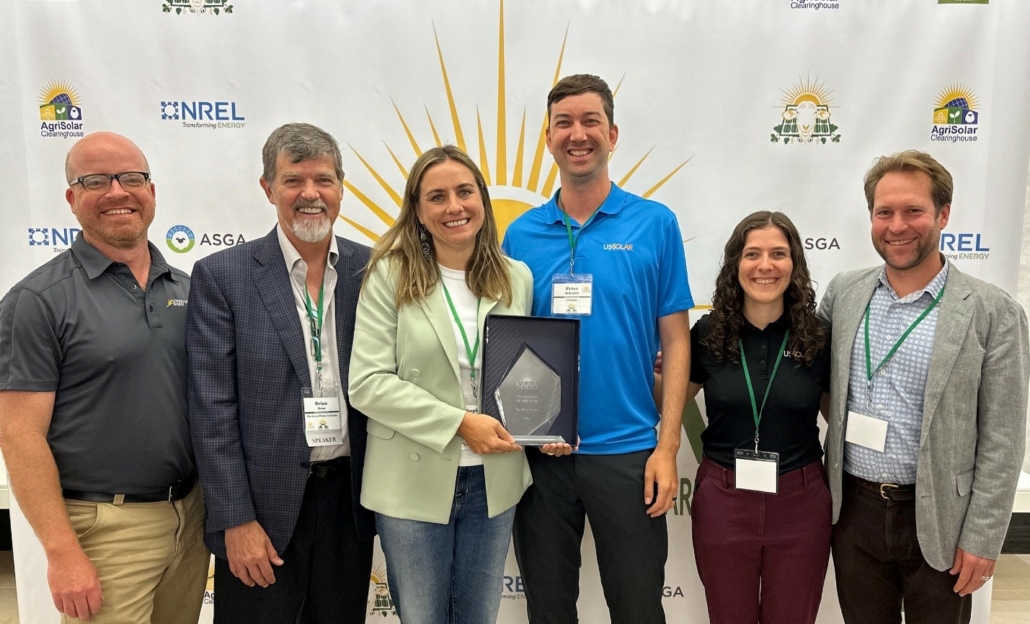
Winners of the North American Agrivoltaics Award for Best Solar Farm in 2024: The Food Group, Big River Farms, US Solar, NREL, Great Plains Institute, and Connexus Energy. Photo: AgriSolar Clearinghouse
Community opposition to multi-acre solar development is driven in part by communities misunderstanding the local benefits of agrivoltaics and thinking that farmland is being taken out of production. Developing solar does not mean farmland is being destroyed or taken out of production. LBNL’s recent research and NREL’s latest publications from the InSPIRE study show that utilities and solar developers need to maintain and improve what is known as “solar’s social license” in communities nationwide. To avoid the worst effects of climate change, more than 3 million additional acres of solar arrays need to be built by 2030.
While incorporating agriculture into solar designs has been shown to increase public acceptance of solar, some approaches are looking at elevating solar panels 10 feet to grow commodity corn and continue status-quo farming approaches. However, hand-harvested crops commonly sold in farmers markets nationwide can readily be grown in abundance with existing solar facility designs, such as one or two panels on single-axis trackers and torque-tube height of six feet.
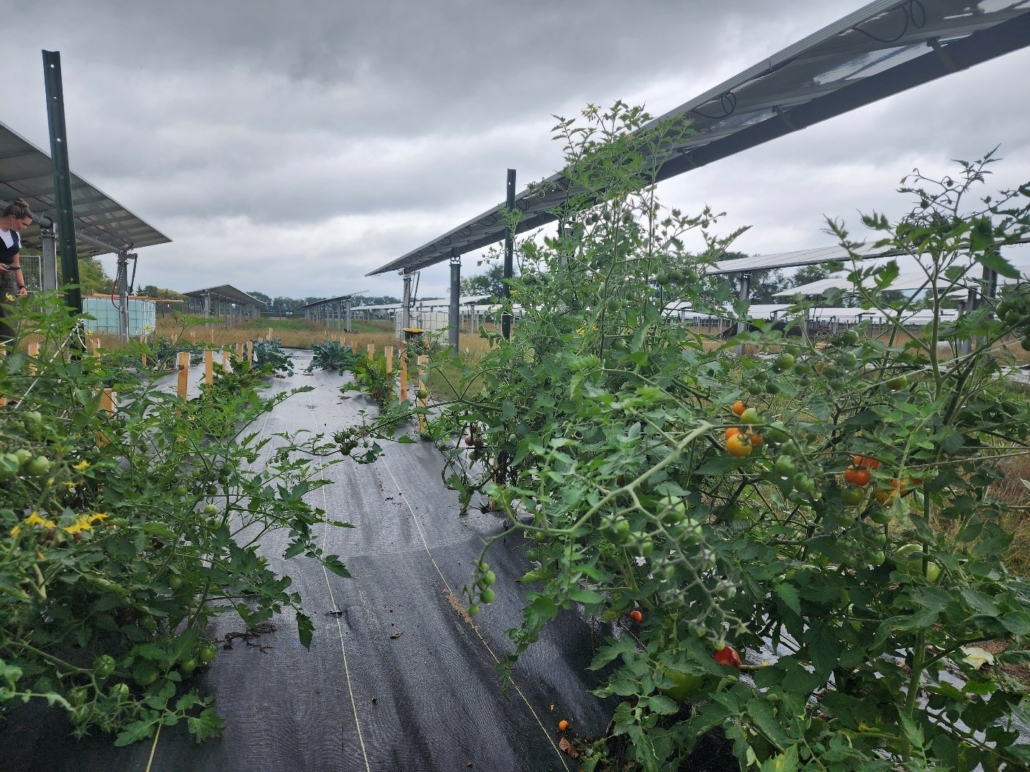
Big River Farms Tomato Crop at US Solar Big Lake Array. Photo: AgriSolar Clearinghouse
Through the Big River Farms program, farmers learn to scale up their food production while implementing sustainable and regenerative farming practices that improve water quality and usage. Having land access to get started as a specialty crop farmer fills a critical niche in helping address the larger challenges related to land ownership and sustainable, specialty farm operations. Building skills, network, and resources, especially in the agrivoltaics community, helps prepare specialty crop farmers for the next stages of their success.
Moving Forward: Growing Farmers, Growing Crops
Moving forward, Big River Farms and Great Plains Institute have been identifying barriers, challenges, and successes of utilizing solar spaces and gathering feedback from farmers, utilities, solar facility owners, and host communities. This project will build capacity and enhance the possibility of success for emerging farmers among immigrant and BIPOC farmers. It will also diversify local agricultural and food-production markets. Most importantly, it will help enhance the communities’ understanding of agrivoltaics systems and diminish the misunderstood concept that solar is taking over valuable agricultural lands.
With these concepts and practices in place, it will help the organization achieve and sustain the mission of “Growing Farmers, Growing Foods.” Through education, the emerging farmers will succeed and prosper, and through sustainable and regenerative agrivoltaics farming practices, the foods will grow as well.

